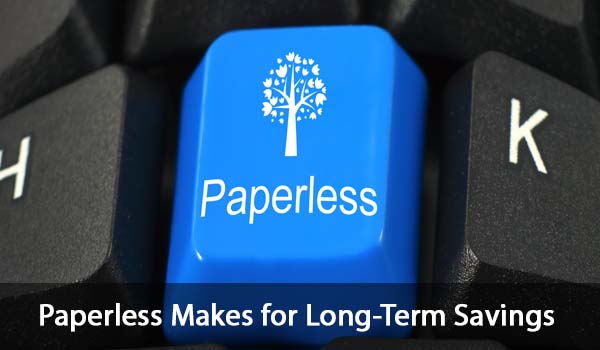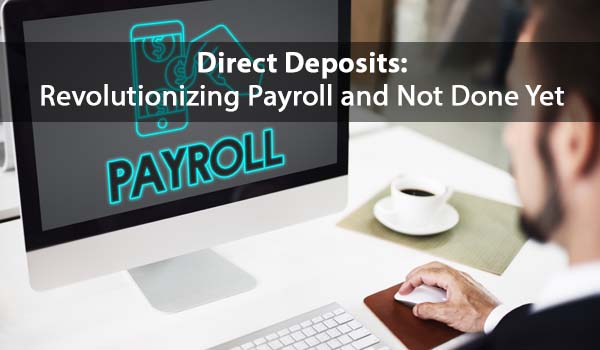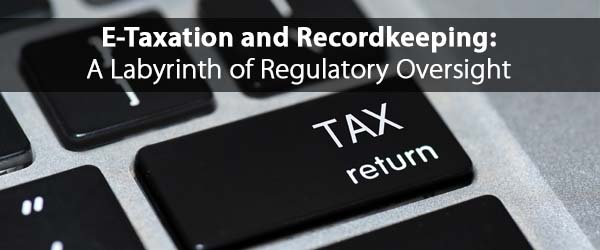Payroll has evolved over many centuries. Even the ancient Greeks in 7000 B.C. were maintaining payroll records on the most current technology of the time – the clay tablet! – according to the American Payroll Association (APA). Since then payroll has come a long way, moving through payroll ledger sheets and calculators, to computers and paperless payroll, and most recently, cloud computing. Today payroll personnel and employees can access payroll information anywhere, at any time, using smartphones and much more lightweight tablets than the Athenians used!
The future of payroll lies in four areas, according to Michael Pappas in the APA article: cloud computing, mobile technology, and “middleware” – application programming interfaces that can lead to greater systems integration – which in turn lead to the fourth area of payroll’s future, that of a “global system of record,” particularly in organizations that have a global workforce. However, before we can address options for the future, it’s important to understand current payroll technologies in use today in order to make the right choices going forward and appreciate the compliance challenges they present.
Paperless Makes for Long-Term Savings
Payroll departments are increasingly going the paperless way – transitioning to online payroll systems, and now to cloud-computing – often in a bid to be more environmentally friendly. Apart from environmental benefits, and with them a lighter conscience and better PR, online and web-based payroll systems also bring long-term costs down, increase efficiency, improve compliance and make payroll management easier.
Paper costs around the world are on the rise, and a paperless payroll system helps reduce the costs of processing payroll, cutting and mailing checks, filing government forms, and more. Direct debits, payroll cards, paperless pay stubs, and electronic payroll tax filing are all part of the transition from paper to paper-free. However, while online systems no doubt present environmental benefits, and even cost savings in the long run, they do come with a few challenges.
Direct Deposits: Revolutionizing Payroll and Not Done Yet
The advent of direct deposits in banking led to a revolution in the way payroll processed employee wages. The benefits of direct deposits to employees are many, including ease and timely collection of payments and access to pay stubs and pay information anywhere.
For payroll departments, direct deposits changed the game dramatically, lowering the costs of transactions and eliminating the need to write checks. But direct deposits are only the tip of the iceberg: McKinsey expects increases in the digitization of banking and banking services to small to midsize organizations and banks are likely to see “more than half of new inflow revenue coming from digital by 2018.”
This means that banks will more likely push innovative and digital payment methods at the employers associated with them. While the digitization of payment methods surges ahead – McKinsey mentions Apple Pay’s contactless-payment technology as a prime example of disruptive technology – employers continue to face ambiguities with regards to the use of direct deposits in compliance with state laws. State laws regarding direct deposits vary, with some states providing employees the option to refuse direct deposits.
Paycards: Easy Payments, But at a Compliance Cost
Another option is the use of paycards, which function like debit cards where employers can deposit the employees’, especially unbanked employees’, pay. While paycards can cut costs and improve savings for employers – the APA’s case study projected that one organization would achieve “over $50,000 in savings from both the cost of printing, as well as their FedEx charges” – employers must meet both federal and state requirements for paycards.
According to CFPB Bulletin 2013-10, Regulation E, which implements the Electronic Fund Transfer Act (EFTA), entitles employees who are paid through “payroll card account” to the protections of the EFTA generally and Regulation E provisions that specifically apply to paycards. Many states also have their own specific paycard requirements that employers must meet.
Online Pay Stubs: To Opt-In or Out, That Is the Question
Most employers provide their employees online pay checks and pay stubs, which reduces printing costs for employers and increases employee access to payment information from anywhere, at anytime.
While federal laws do not require employers to provide their employees with pay stubs, state laws regarding the use of pay stubs vary greatly; some states allow employees to opt out of e-pay stubs – employers in these states must provide paper pay stubs to employees who do opt out – and other states give employees access to pay stubs, electronic or otherwise, while others mandate employees’ access to electronic pay stubs and a way to print them, according to Patriot Software.
E-Taxation and Recordkeeping: A Labyrinth of Regulatory Oversight
Electronic taxation includes the filing of payroll taxation forms online with the IRS. E&Y’s payroll checklist notes that for businesses with 250 or more Forms W-2, W-2c, or IRS information returns or statements (Forms 1094, 1095, 1099, 1042-S, 8027), electronic filing of these forms is mandated with the Social Security Administration or IRS, and paper filing of returns when e-filing is required can subject organizations to penalties.
E&Y’s survey of state filing requirements (Table 4) showed that states are placing increasing emphasis on Internet and electronic reporting options for Forms W-2s, and unemployment insurance returns.
As part of the move to paperless payroll, employers can store payroll, taxation, employee benefits, personnel and applicant records, and EEO-1 data online. However, different recordkeeping requirements apply to different forms, and online and paper recordkeeping requirements vary. Electronic storage of Forms I-9 must comply with USCIS requirements – making paper storage unnecessary – and employers must retain I-9s for three years after date of employment or for one year after date of termination of employee according to HR Legalist.
Other requirements apply to retention of employee records under FLSA, OSHA records, FMLA records, ERISA records and more: So even without adding state requirements to the mix, federal agencies have certainly thrown down the gauntlet for employers that are interested in transitioning to paperless payroll.
Compliance Requirements Evolve: Will You?
Payroll expert Vicki M. Lambert, CPP, addresses the myriad obligations employers face when they adapt ever-changing payroll technologies and electronic requirements in order to go paperless in “Going Paperless in Payroll,” a webinar with AudioSolutionz. Vicki provides insights on how to go paperless in payroll to enjoy the benefits of decreased costs and increased efficiency, while still maintaining compliance with this expanding array of regulations.









